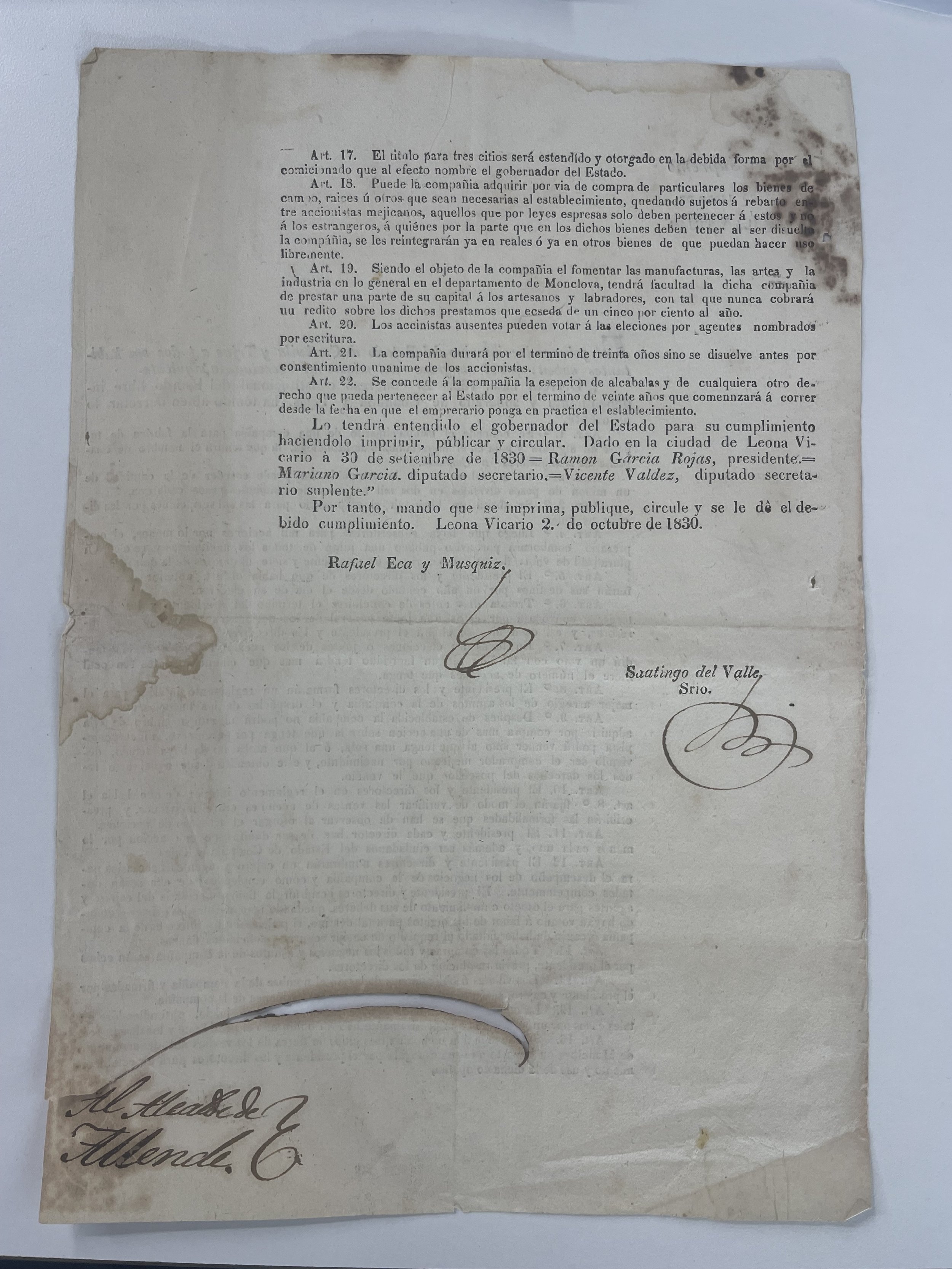1843 Receipt of Prisoners Signed by Sam Houston
DESCRIPTIONThis historical document, signed by Sam Houston in 1843, is beautifully framed to complement the aged tone of the paper and the deep brown of the antique ink of the signature. It includes a copy of the carte de visite of Sam Houston and a brass plate with historical context.
History & context below.
DETAILS & MEASUREMENTSFrame measures 17" width x 19" height
Good condition
Dated March 25, 1843
Includes copy of Carte de visite of Sam Houston
Document confirming receipt of Native American prisoners
DESCRIPTIONThis historical document, signed by Sam Houston in 1843, is beautifully framed to complement the aged tone of the paper and the deep brown of the antique ink of the signature. It includes a copy of the carte de visite of Sam Houston and a brass plate with historical context.
History & context below.
DETAILS & MEASUREMENTSFrame measures 17" width x 19" height
Good condition
Dated March 25, 1843
Includes copy of Carte de visite of Sam Houston
Document confirming receipt of Native American prisoners
DESCRIPTIONThis historical document, signed by Sam Houston in 1843, is beautifully framed to complement the aged tone of the paper and the deep brown of the antique ink of the signature. It includes a copy of the carte de visite of Sam Houston and a brass plate with historical context.
History & context below.
DETAILS & MEASUREMENTSFrame measures 17" width x 19" height
Good condition
Dated March 25, 1843
Includes copy of Carte de visite of Sam Houston
Document confirming receipt of Native American prisoners
➼ History & Context
One of the most notable figures in Texas history, Sam Houston is well known as the first & third president of the Republic of Texas, though fewer know that he is the only person to have served as governor of two different states – Texas after it became a state and Tennessee in 1827, well before he went to Texas.
Born in Virginia, his family moved to Tennessee when Houston was a teen. At one point, he ran away from home and lived with the Cherokee people led by Chief Ahuludegi on Hiwassee Island for several years, learning the language and taking on the moniker Raven. This began a long and layered connection with the Native Cherokee people that continued throughout his life, and his second wife, in fact, was Tiana Rogers, a niece of Chief Ahuludegi.
Houston served under General Andrew Jackson in the War of 1812 and almost died in the Battle of Horseshoe Bend. While he served under Jackson as a sub-agent in charge of the forced displacement of Cherokee people from Tennessee, he also at multiple points throughout his political career served as liaison between Native people and the US government and in 1829 was given Cherokee tribal membership.
Elected to the US House of Representatives for Tennessee in 1823 and governor in 1827, Houston resigned his position in 1829 after a short and tumultuous marriage to Eliza Allen. In 1832 he moved to Texas, where he later became the head of the Texian Army and eventually won the Battle of San Jacinto – though his horse was killed out from under him and his ankle shattered by a bullet.
In 1836 Houston won the first Texas presidential election against Stephen F. Austin, was forced out by term limits in 1838, then won again in 1841. He was a strong proponent of annexation by the US, and worked tirelessly for years to secure it finally in 1845. The next year, Houston became one of Texas’s first senators, advocating for unionism. Though he ran twice for president, he lost both times, and became the governor of Texas in 1859. He pushed hard against secession and to stay out of the Confederacy, though ultimately got pushed out of office for it.
He lived in Galveston for many years with his third wife, Margaret Moffette Lea, and had eight children with her. He died at 70 years old in 1863.
➼ Carte de Visite
Abbreviated CdV, carte de visite were small photographs – albumen prints – of thin paper mounted on thicker card.
Patented by photographer André Adolphe Eugène Disdéri in Paris in 1854, but not popular for several years until after he published Emperor Napoleon III’s photograph, carte de visite of notable figures and celebrities caught on like wildfire and were quite collectable.
Dubbed “cardomania,” carte de visite became extremely popular as visiting cards, traded among friends and family and displayed in collection albums throughout the Victorian era, and widely used as a relatively inexpensive way for family and friends to send photos to loved ones during the Civil War.
By the 1870s the larger “cabinet cards” took over and remained in demand until Kodak created the personal Brownie camera in the early 20th century.


























